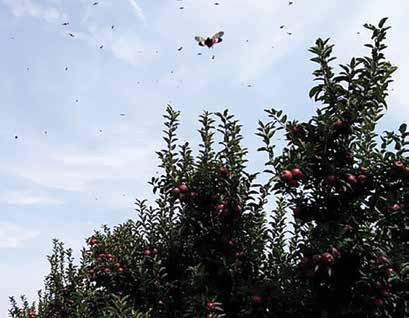Posted: October 4, 2019
The spotted lanternfly is not a strong or frequent flier--weaknesses that may hinder its ability to travel long distances by air, according to Thomas Baker, Distinguished Professor of Entomology and Chemical Ecology, and colleagues.
The team's investigation of the invasive planthopper's flight behaviors revealed that adult spotted lanternflies will crawl to the top of the nearest vertical surface and launch themselves into the wind to create level or gradually descending straight-line flight paths, usually 10-30 feet high and averaging only 75 feet in length before landing. Baker believes that the insect's attraction to vertical silhouettes, coupled with its tendency to stay visible on these surfaces for a long time, may be an effective way to document spotted lanternfly populations and possibly predict their next move.
--Amy Duke
Features
Breaking the Silence on Farm Stress
Farming has always been a demanding profession, but today's farmers face unprecedented pressures that can severely impact their mental health.
Biting Back
Research Targets Vector-Borne Diseases to Save Lives
Leading Forward
Ott brings deep connection to role of dean.



